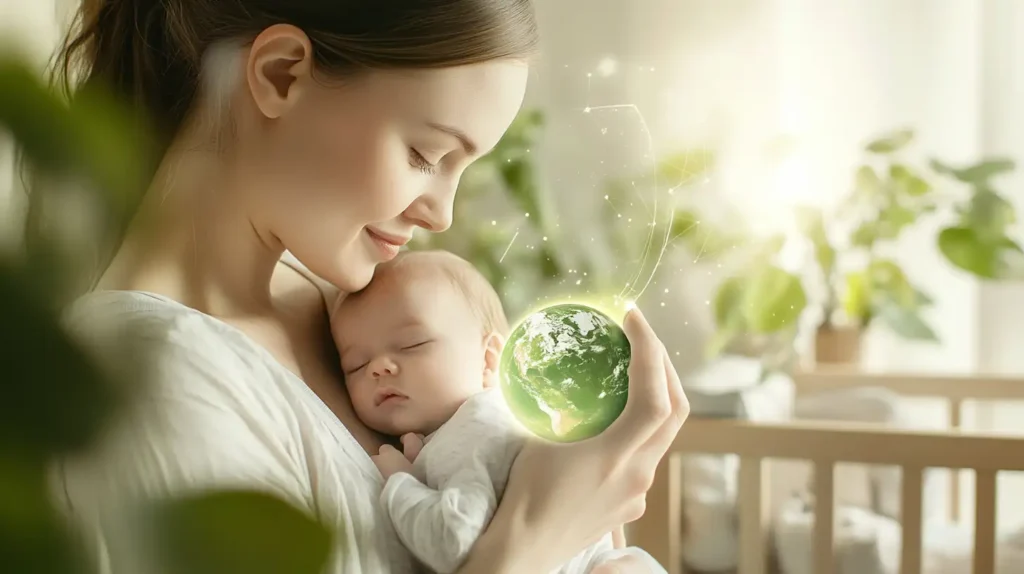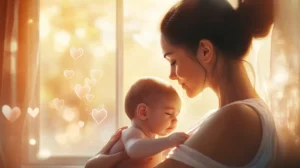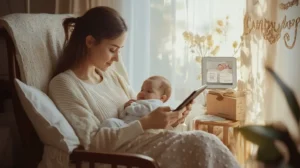Table of Contents
ToggleBeyond the Green Hype: How to Choose Truly Sustainable Baby Gear That Actually Works
Have you ever found yourself standing in the baby aisle, overwhelmed by endless products claiming to be natural, eco-friendly, or green? I remember when I was expecting my first child, I’d pick up a bamboo teether in one hand and an organic cotton onesie in the other, wondering if these choices were actually making any difference for our planet.
Maybe you’re feeling that pressure too—the desire to make responsible choices for your baby while simultaneously trying to save the earth. And let’s be honest, sometimes it feels like the more you try to make eco-conscious decisions, the more confused and frustrated you become. Is that plant-based plastic bottle really better? Does that organic label actually mean anything substantial?
In this post, I’m going to share something I wish someone had told me before I spent hundreds of dollars on supposedly green baby products that ended up being nothing more than clever marketing. And I learned this the hard way—through countless nights researching while my baby slept, through conversations with environmental scientists, and yes, through my own expensive mistakes.
The truth is, sustainable parenting isn’t about buying everything labeled eco. It’s about making intentional choices that truly matter. And the secret I’ve discovered? The most impactful eco-friendly choices are often the ones that work better than conventional options.
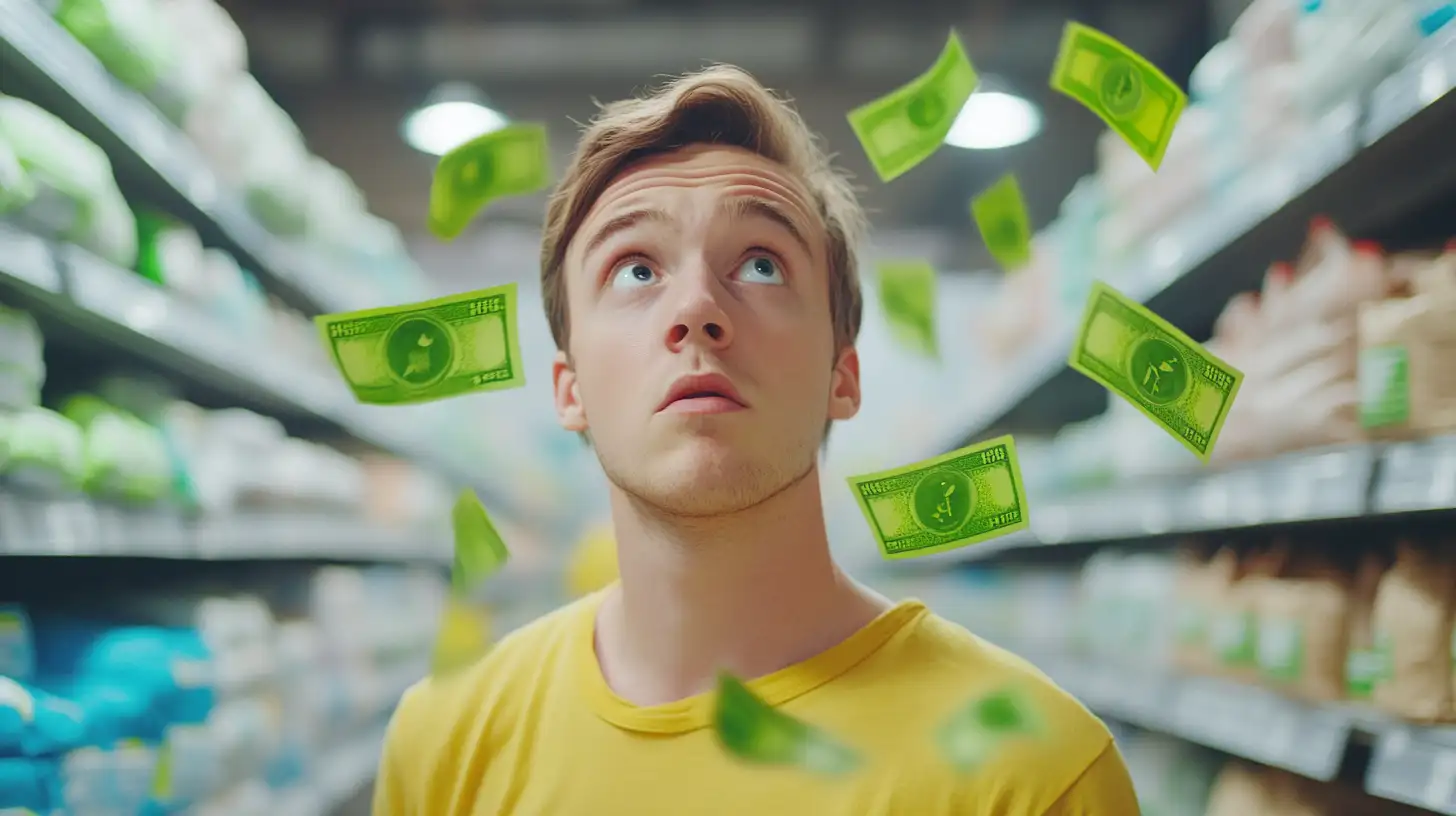
Why Most Green Baby Products Are Just Draining Your Wallet
Let me tell you a little story. When my son was born, I was determined to be the most eco-conscious mama on the block. I bought the bamboo everything—diapers, wipes, clothes, you name it. I spent three times more than I needed to because I thought I was saving the planet one baby item at a time.
Two weeks in, those bamboo diapers were leaking everywhere. The bamboo wipes were too rough on my baby’s delicate skin. And those expensive organic clothes? They shrunk after the first wash.
Here’s what I didn’t understand then: greenwashing is real, and it’s everywhere in the baby industry. Companies know new parents are vulnerable—we want the absolute best for our babies, and we’re willing to pay for it. We’re the perfect target for products that claim to be eco-friendly but actually make minimal environmental impact.
The biggest mistake most parents make? We think by caring deeply about the environment and spending more on products with green labels, we’re automatically making better choices. But what I’ve learned is that true sustainability isn’t about buying more green things—it’s often about buying fewer, better things.
When you free yourself from the pressure to buy everything with an eco-label, you start to make more effective environmental choices. You become calmer, more discerning, and ultimately more powerful as a consumer. And the beautiful irony? That’s when your choices start making a real difference.

The Four Baby Essentials Where Sustainable Actually Means Superior
Growing up in Trinidad, my grandmother taught me something valuable. She would say, Child, the best things last. She wasn’t talking about sustainability as we define it today, but her wisdom applies perfectly. The most sustainable baby items are often the ones that last the longest and perform the best.
Let me share the four areas where eco-friendly options genuinely outperform conventional ones:
- Cloth diapers 2.0: Forget what you think you know about cloth diapers. Modern versions have snap closures, waterproof covers, and insert systems that make them as convenient as disposables. After the initial investment of about $300-400, you’ll save approximately $1,500 over the diapering years. And the best part? Quality cloth diapers can be used for multiple children, making them even more cost-effective and reducing the estimated 7,000 disposable diapers a child uses before potty training.
- Glass or stainless steel bottles: These don’t leach chemicals, last virtually forever, and maintain better temperature control. While they cost about 30% more upfront than plastic, they outlast plastic bottles by years and can be passed down between siblings.
- Solid wood furniture: A solid wood crib or dresser might cost 40-50% more than particleboard versions, but it will last for generations rather than ending up in a landfill after a few years. Look for woods certified by the Forest Stewardship Council (FSC) to ensure responsible forestry practices.
- Silicone instead of plastic: For everything from bibs to feeding supplies, medical-grade silicone offers the convenience of plastic without the environmental downsides. It’s more durable, heat-resistant, and doesn’t harbor bacteria like plastic can.
When I finally switched to these truly sustainable options after my initial missteps, I discovered they weren’t just better for the environment—they were better products, period. My cloth diapers never leaked like the eco-disposables did. My son’s stainless steel sippy cup survived countless throws from the high chair when plastic ones would have cracked.
And here’s the liberating truth: if these sustainable choices work for you, fantastic. If some don’t fit your lifestyle, that’s okay too. The goal isn’t perfection; it’s progress. Either way, you’re going to be okay. I promise.

The Truth About Organic Baby Products That No One Is Telling You
Let me be real with you. One night, as I was nursing my daughter under the glow of my phone screen (we’ve all been there), I fell down a research rabbit hole about organic baby products. What I discovered shocked me.
The term organic on baby clothes? Unless it’s GOTS certified (Global Organic Textile Standard), it might mean very little. Many products labeled organic only contain a small percentage of organic materials, or they’re grown organically but processed with the same chemicals as conventional products.
Here’s what actually matters when it comes to organic baby items:
- Organic mattresses: Babies spend 12-16 hours a day sleeping. A truly organic mattress (look for GOLS-certified latex or GOTS-certified cotton) eliminates exposure to flame retardants and other chemicals during this critical developmental time.
- Organic food: Once your baby starts solids, organic options for the dirty dozen fruits and vegetables (those with the highest pesticide residues) can reduce chemical exposure. But organic cookies and processed snacks? They’re still processed foods with limited nutritional benefits.
- Organic skincare: A baby’s skin absorbs what you put on it. Simple, certified organic products for daily use can reduce chemical exposure—but you don’t need a 10-step organic skincare routine for your baby.
Remember my grandmother from Trinidad? She used to make her own baby oil from coconut harvested right in our yard. It wasn’t certified organic—that term didn’t exist then—but it was pure, natural, and free from the unnecessary additives found in many commercial products today.
The most powerful thing I’ve learned is that when you stop fixating on buying every single organic item and instead focus on these high-impact areas, you actually create a healthier environment for your baby while being genuinely environmentally responsible. You become free from the anxiety of trying to make everything perfect and start making choices that truly matter.
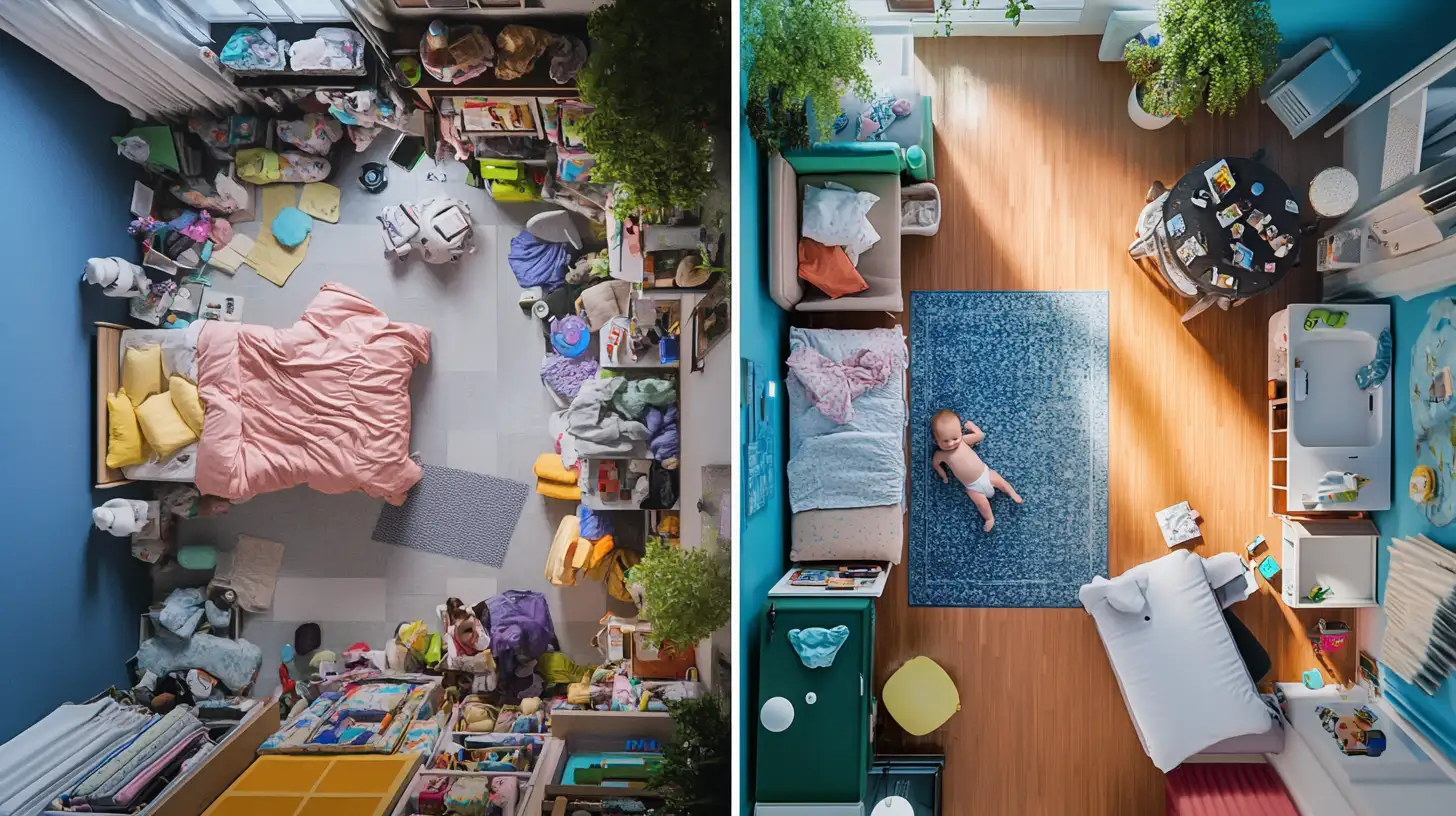
The Minimalist Baby Approach: Why Fewer, Better Things Is the Most Sustainable Choice
I made a huge mistake with my first baby that I bet many of you can relate to. I bought everything—and I mean everything—that the baby stores and websites told me I needed. The special diaper disposal system. The wipe warmer. The baby food maker. The bouncer AND the swing AND the activity center.
Most of it? Barely used. Many items didn’t even make it to baby number two. And all of it required resources to produce, package, ship, and eventually dispose of.
Here’s a powerful secret that changed everything for me: the most sustainable choice is often the item you don’t buy at all.
When I was growing up in the Caribbean, babies didn’t have a fraction of the gear considered essential today. A few simple items were passed between families and generations. And somehow, all of us turned out just fine.
Consider embracing what I call the minimalist baby approach:
- The 24-hour rule: Before buying any baby item, wait 24 hours and ask yourself if you truly need it or if there’s a multipurpose alternative you already have.
- Choose convertible gear: Items like cribs that convert to toddler beds, or high chairs that transform into regular chairs, have longer useful lives and create less waste.
- Embrace secondhand: Babies use items for such a short time that secondhand often means barely used. Baby clothes, books, and gear from consignment shops or local parent groups reduce production demands and keep items out of landfills.
- Create a family sharing network: Connect with friends or family members who have children of different ages and create a lending system for baby gear. This reduces the total number of items needed within your community.
When I finally let go of the need to have every baby gadget and embraced this minimalist approach with my second child, something amazing happened. Our home was less cluttered. We saved money. And most surprisingly, parenting became simpler and more enjoyable without all the stuff getting in the way.
The law of detachment applies perfectly here: when you put in your best effort to make thoughtful choices and then let go of the pressure to have everything, life—and parenting—can work more in your favor.
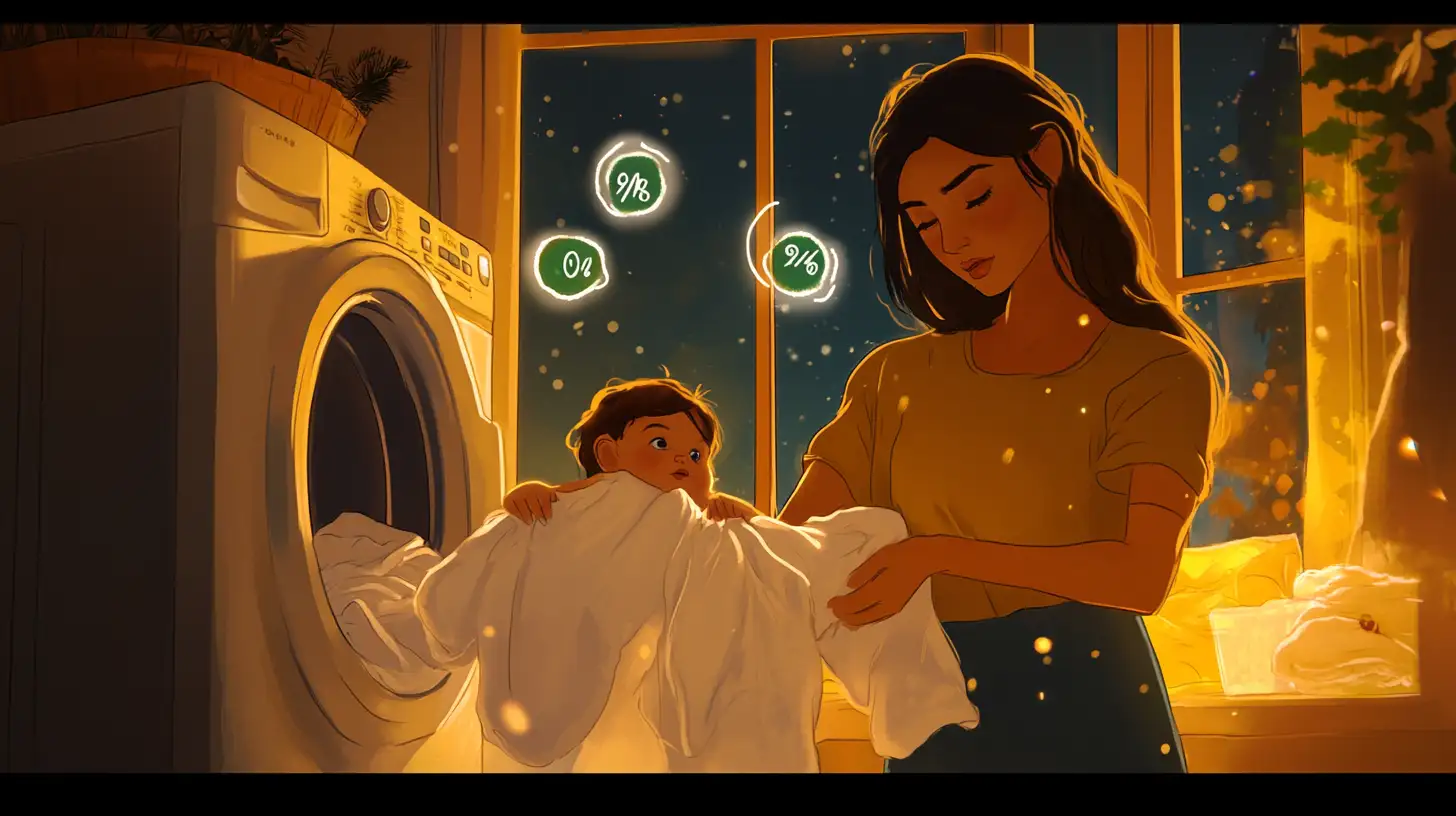
Creating Your Own Sustainable Baby Journey Without the Eco-Guilt
Let me share something personal. My lowest moment as an eco-conscious parent came when my mother-in-law visited and saw me washing cloth diapers at 2 AM while my baby was finally sleeping. I was exhausted, overwhelmed, and honestly, resentful of the green choices I’d committed to.
She looked at me and said something I’ll never forget: The most important thing for that baby is a happy, rested mother. Everything else is just details.
That night, I gave myself permission to redefine what sustainable parenting meant for me. And I want to give you that same permission.
True sustainability isn’t a competition or a perfect score—it’s a journey unique to your family’s needs and values. Here’s how to create your own sustainable baby journey without the crushing eco-guilt:
- Choose your non-negotiables: Pick 2-3 areas where you won’t compromise on sustainability (perhaps cloth diapers and natural skincare) and give yourself flexibility elsewhere.
- Practice the 80/20 rule: Aim to make sustainable choices 80% of the time, and forgive yourself for the other 20%. That disposable diaper during a long flight? That’s part of your 20%.
- Value your time and sanity: Sometimes the most sustainable choice for your family is the one that preserves your energy and joy in parenting. A burned-out parent trying to do everything perfectly is not sustainable.
- Build community: Connect with other parents interested in sustainable choices. Share resources, swap outgrown items, and offer mutual support.
What I’ve discovered is that when you embrace your own version of sustainable parenting—one that aligns with your values, goals, and what happiness means to your family—you become more confident with every step. You stop living for someone else’s approval or some impossible standard of eco-perfection.
Because at the end of the day, people who matter won’t judge your parenting choices. And the people who judge don’t matter in your journey.
Your Next Steps Toward Mindful Parenting
I want to leave you with this powerful truth: you become powerful when you stop caring about the wrong things (like having every eco-label or looking like the perfect green parent) and start focusing on what truly matters—raising a happy child on a healthier planet.
If you’ve been thoughtful in your choices, if you’ve done what works for your unique family situation, then you’ve already won. You’re already making a difference.
So where do you go from here? Start small. Maybe it’s researching one quality sustainable item to replace something disposable. Maybe it’s joining a local parents’ group to share and receive secondhand items. Or maybe it’s simply giving yourself permission to let go of eco-perfectionism.
Whenever you’re reading this, I want you to have the courage, clarity, and power to parent on your terms. Because when you align your choices with what truly works for your family and our planet—not what the marketing world tells you to buy—you become unstoppable.
If you’ve found this article helpful, please share it with another parent who might be feeling the pressure of eco-perfectionism. We’re all in this together, creating a better world for our little ones—one thoughtful choice at a time.
Beyond her professional achievements, Jessica is also a successful mother to a large and thriving family. Her firsthand experience in balancing financial responsibilities while raising multiple children gives her a unique perspective that resonates with her audience. As a mother, Jessica understands the financial challenges and pressures faced by families, and she brings a compassionate and relatable approach to her blogging. Through her blog, Jessica not only shares her financial expertise but also provides invaluable insights on how to foster financial well-being while building a strong and harmonious family foundation. Whether it's budgeting, saving for college, or teaching children about money, Jessica's relatable stories and practical tips make her an indispensable guide for individuals striving to achieve financial stability while nurturing a fulfilling family life.

